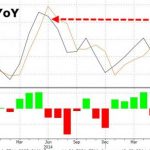The monthly US employment report is the key to the remainder of the session. Market participants appear to generally accept several things about the report.

First that the August time series, as well as the September series is often subject to upward revisions from the first estimate.
Second, that barring significant surprise, those that expect the Fed to hike are largely concentrated in the December time-frame not October.
Third, that the unemployment rate of 5.1% is nearly identical to the level that prevailed when the Fed’s last tightening cycle began. The broader measure that includes those who take part-time work because they cannot find full time work was nearer 9.5% than August’s 10.3%.
Fourth, compelling evidence of reduced slack in the labor market comes from higher earnings. The market expects a 0.2% rise in average hourly earnings in September. This would match the average monthly increase in recent months, and lift the year-over-year rate to 2.4%, which would be the highest since August 2009.
On balance, a report broadly in line with expectations may see a headline reaction, the most likely scenario is for participants to fade the initial move. It is unlikely to change views about the Fed’s lift off. Many are still wrestling with the weak manufacturing ISM (lowest since May 2013) and the downward revisions to Q3 GDP estimates spurred by flash merchandise trade report in the middle of the week. The Atlanta Fed’s GDP nowcasting slashed its Q3 tracking to 0.9% from 1.8%. Many private sector economists cut their estimates toward 2.0% from around 2.5%.
Separately, data from Japan and Australia earlier today pushes participants in the direction they were already moving, and that is to reduce the perceived chances that either central bank eases policy at next week’s meetings. The unexpected decline in Japan’s industrial output in August fanned speculation that the world’s third largest economy contracted for the second consecutive quarter in Q3. However, today’s report showed overall household spending rose 2.9% year-over-year in August. The consensus was for a 0.3% increase after falling 0.2% in July.


















Leave A Comment